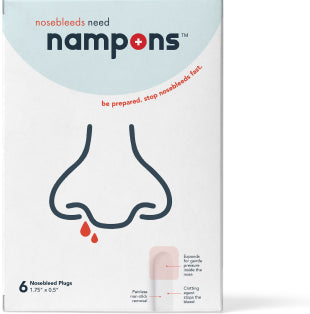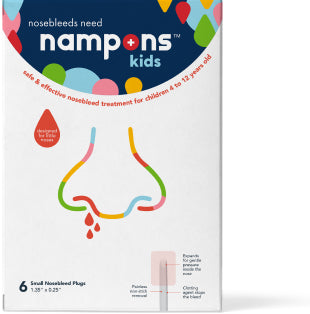This article was written by Dr. Drew Sutton, a retired ENT doctor who lives in the Southeastern US. During his 30 year career, he was an American Academy of Otolaryngology member and a Fellow of the American College of Surgeons.
The term “booger” is a colloquial term for dried nasal mucus, that slippery aqueous secretion produced throughout our bodies. The types of cells that produce varying types of mucus are different in the digestive, respiratory, and reproductive tracts.
Despite mucus being produced in many locations of the body, the most famous mucus is the mucus in our nose, particularly when it dries. Technically, mucus is part of the airway surface liquid or epithelial lining fluid of the respiratory tract.
Mucus that thickens usually represents a collection of cell debris, bacteria, viruses, inflammatory cells, and foreign bodies from the environment such as dust, dirt, and grime. Thickened mucus is known as phlegm. Snot is another term used for mucus and is derived from the Old English word “gesnot.”
As an ENT surgeon, even my own children were fascinated by nasal boogers and wanted to know more about them. My children used to tell me, “Dad, hey it may be boogers to most people, but to us it’s our bread and butter!”
Boogers keep us healthy
Believe it or not, mucus keeps our noses and airways healthy by clearing debris like a filtration system. Boogers are one way the body traps germs, allergens, and other foreign invaders so they can be expelled. In essence, boogers are good filters while keeping the lining of our noses healthy by preventing inflammation or infection. Our bodies produce about a liter of nasal mucus, the size of a Big Gulp at a gas station.
The problem is that boogers can be annoying. They can dry and crust, and by themselves cause inflammation or infection. Children discover this annoyance early since their noses and airways are small and they have immature immune systems. Chronic nose picking can lead to a host of problems. It is a condition called rhinotillexomania.
Most commonly, boogers develop when we least expect. For people, particularly children with asthma or allergies, it is common to rub the nose from the outside. A common sign is known as the nasal salute. In these cases, children have the habitual gesture of wiping or rubbing the nose upwards. In fact, some children develop nasal creases as a result.
Sneezing can alleviate excess mucus or even expel boogers due to irritation in the nose. Triggers include respiratory infection, allergens, smoke, chemicals, pollution, and even sudden exposure to cold air or bright sunlight. Sneezing can spread germs because of the speed of the air when we sneeze.
Bloody or colored boogers?
The characteristics of boogers are varied, and particularly interesting to many who believe they reveal some type of clinical diagnostic tool. The reality is disappointing. One can never fully judge a booger by its color or any other distinguishing feature.
Color of mucus can change rapidly. Usually, cold germs, for example, cause clear mucus, but so can allergies. Our immune system may recruit special cells to fight any foreign invaders or germs, but the color of the mucus can remain clear, change to white, or even morph into shades of yellow or green.
Keep in mind, boogers act as a lubricant, a shield, and a trap. But, the body doesn’t hold mucus forever and merely by taking the characteristics of various substances, mucus can turn into technicolors.
It is common to look at green or yellow mucus and assume that it represents an infection. For years, many patients and parents of children with green or yellow mucus, demanded being treated with antibiotics in doctor’s offices only to find out that the antibiotics were not only unnecessary, but in some cases, caused more harm by causing antibiotic resistance. The bottom line is the color of boogers means little to nothing.
Mucus, or boogers, have other myths. Boogers are not dead brain cells. Boogers are not cerebrospinal fluid leaking out of your brain or spinal cord.
Bloody boogers are a result of either the mucus causing irritation, inflammation or infection resulting in nasal irritation, or manipulation of the nasal lining. Blood in the nose is never normal, but it can be easily explained in most cases.
The amount of blood is what counts.
The technical term for blood in the mucus is hemoptysis. Coughing up blood or bloody mucus can represent serious health concerns.
Blood in the mucus or boogers is a common occurrence in many mild respiratory infections, including the common cold. Any nasal, sinus, or lung infection can lead to mild bleeding. Some infections such as those caused by Staphylococcus, Pseudomonas, or tuberculosis, can cause more bleeding.
Mild bleeding from the nose usually results in streaking of nasal mucus or small amounts of bloody boogers. It does not necessarily mean that the bleeding is active, but it can change and be a sign that something more needs to be done. Old blood is dark red or black. New, fresh bleeding is bright red.
Keep in mind bleeding from the nose and mouth can be commingled. If someone has a throat infection or tonsillitis, bleeding can be swallowed or end up in the nose. Vigorous coughing or vomiting may cause blood both in the mouth or nasal mucus and end up in bloody boogers.
Nosebleeds are usually a result of something else, such as a nasal infection or trauma to the nose. They can also be a result of taking blood thinners or high blood pressure.
Most nosebleeds are anterior and can be easily controlled with conservative measures such as ice, compression, medications, cautery, or packing such as Nampons.
Key Takeaways
- All boogers are not bad, but some can be a sign of a medical problem that needs attention.
- Bloody boogers can result from infection, inflammation, or most commonly, from nasal trauma or picking (manipulation).
- Blood in the mucus (hemoptysis) can mean there is bleeding from anywhere in the upper airway and should not be confused solely with a nosebleed
- Boogers that have different colors do not always mean there is a bacterial or viral infection.



